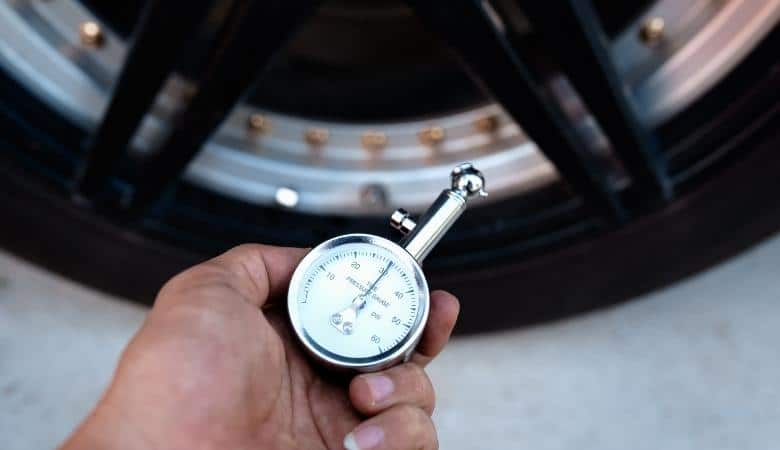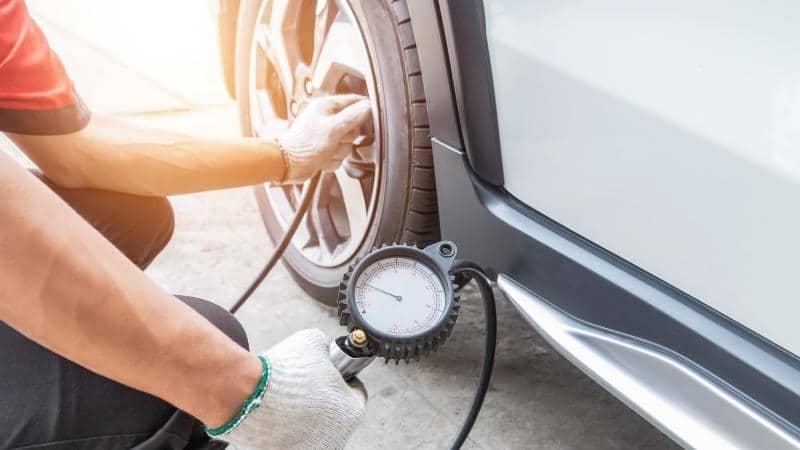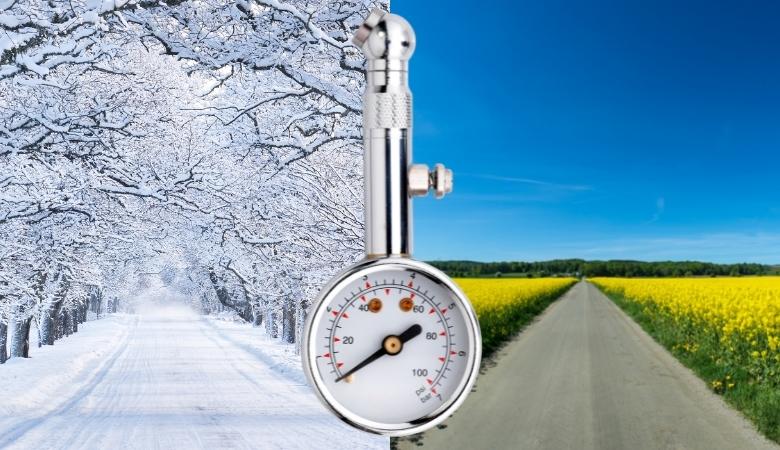Proper maintenance of your tires not only improves their performance but also their durability.
Among the numerous methods and tips for ensuring proper tire care, regular tire pressure checks are the most important, as they involve maintaining optimal tire pressure as recommended by the manufacturer.
Sudden temperature changes can cause significant fluctuation in tire pressure. As temperatures rise, the air in your tires expands, leading to higher air pressure. However, in cold conditions where the temperature drops, the air in your tire contracts, causing lower air pressure.
This constant fluctuation in tire pressure can quickly become a problem when maintaining recommended tire pressure, hence raising the question: should I deflate my car tires in hot weather and inflate in cold weather?
You should not overinflate your tires because the temperature is dropping, nor should you underinflate them because the temperature is increasing. It’s best to follow the manufacturer’s recommended tire pressures as vehicles are designed to perform best when the tires are inflated to the recommended PSI’s.
Read on to get the more in depth answers to this question as well as valuable tips to help you deal with weather changes and its effect on tire pressure.
How The Weather Affects Tire Pressure
Changes in weather conditions are constant, and with it comes sudden temperature changes. These temperature changes lead to a drop or rise in tire pressure overnight.
The black color of tires causes them to absorb heat when exposed to sunlight, thereby increasing the temperature of the air chamber.
Moreso, the rolling of the tire and its contact with the road during motion also causes the tire to heat up. The increase in temperature results in increased tire pressure.

The relationship between tire air pressure and temperature is directly proportional, where lower temperatures mean lower air pressure and vice versa. When the outside temperature changes, tire air pressure changes as well.
During the fall and winter, your tires will lose air pressure, especially if you have adjusted your tire pressure in the summer. The difference and decrease will be noticeable once the cold weather hits.
As the temperature drops further, drivers may notice changes in their tire pressure, and TPMS lights may turn on their dashboard. However, this does not mean that your tires are leaking.
If your tires were already under-inflated before the fall or winter, the drop in air pressure will be quicker and more severe than it would be if they were correctly inflated.
What About Deflating My Car Tires During Hot Weather And Inflating During Cold Weather?
Vehicle safety and performance are directly affected by tire pressure. The difference in tire pressure may not be visible to the naked eye; however, with the help of an automatic Tire Pressure Monitoring System (TPMS) or pressure gauge, tire pressure can be kept in check.
Low tire pressure that triggers a TPMS warning light will negatively impact handling and traction, leading to decreased traction in wet conditions due to a reduced contact patch, loss of braking performance, and maneuverability at high speeds.
If you want to avoid the consequences of overinflated or underinflated tires, you should check your tire pressure at least once every month. Even without leaks, tires continue to lose pressure over time, and your car may not alert you until the pressure is really low.
However, you should not overinflate your tires because the temperature is dropping, nor should you underinflate them in anticipation of an increase in temperature. Vehicles are designed to perform best when the tires are inflated to the manufacturer’s recommended pressure. Hence, it is best to stick to them.
With that said, if you think your tires are underperforming in certain weather conditions, consider changing them, as different tires are suitable for other weather conditions.
During extreme temperature fluctuations, tire pressure should be monitored and adjusted more frequently. Although these minor adjustments help to accommodate the pressure changes resulting from temperature differences, it is recommended that inflation pressures be checked the next morning when temperatures are once again cold.
Checking and Maintaining Your Tire Pressure

Ideally, you should check your tire pressure before you drive your car in the morning, when they are still cold. This is because tire manufacturers recommend a specific tire pressure level. However, those manufacturers preset tire pressure levels are determined when the tires are cold, and you must follow the same if you want to get accurate readings.
Driving your car causes friction between your tire and the road resulting in a rise in the temperature, creating false inflated tire pressure. Check your tire pressure before driving out of your garage and makeup to the recommended manufacturer value to remedy this incorrect pressure level.
Nevertheless, if you have to drive to a gas station to get air in your tires, simply measure your tire pressure before leaving home. Measure your tires again when you arrive at a gas station, and adjust the pressure based on your first reading.
Tire Pressure Symptoms To Look Out For
The effect of temperature on tire pressure is a potential safety concern, from wearing tires to blowouts and increased friction with the road. Below are a few signs to note changes in tire pressure during different seasons:
- Visibly flattened tires are rare in the summer, except for a leak. However, if it happens during winter, it can be attributed to the sudden change in temperature and should be attended to immediately.
- Increased road noise is also a signal of low tire pressure. Low tire pressure alters the even distribution of your car’s weight over the tires, causing more drag and increased road noise.
- When the TPMS light turns on or blinks continuously, it shows low or high pressure in the tires. Rather than continue driving, it is best to park in the nearest safe location and have it sorted.
Hi, my name is Niklas, the head content creator & CEO of Whirling Wheelz. I am very interested in vehicles of all kinds, mainly cars. I have a car mechanics degree from high school and a big hobby of mine is to follow the WRC (World Rally Championship) both online and through travel.


